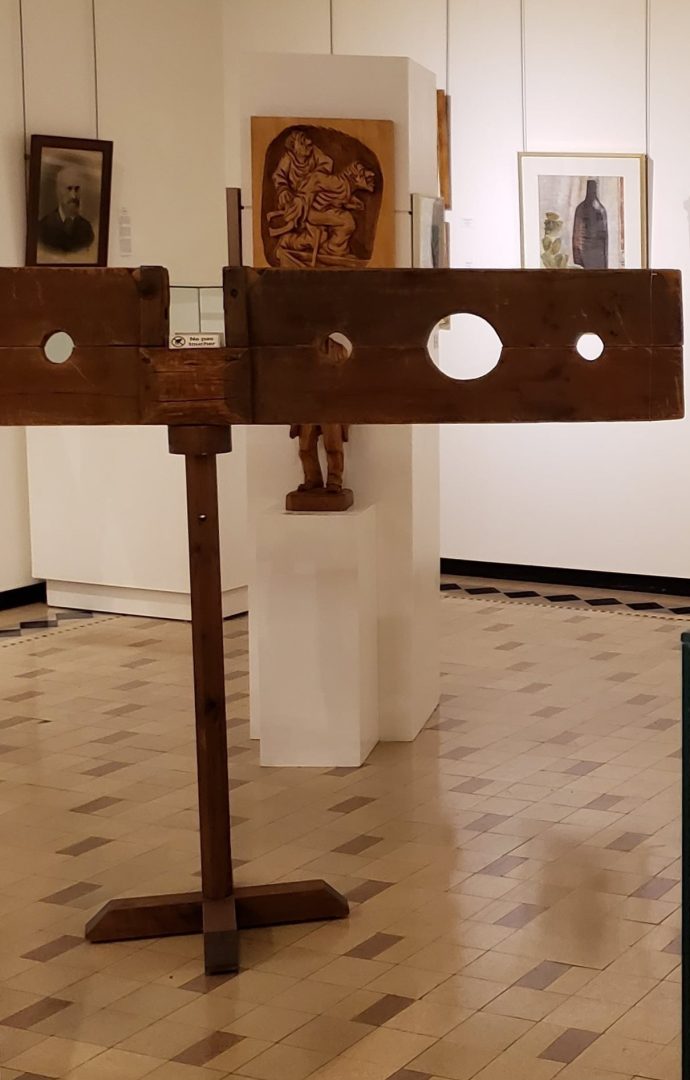This pillory with two constraints comes from the Trois-Rivières prison. It is not known which artisan designed it. This instrument of torture has been known since the Middle Ages in Europe. Single or double, it was used to immobilize the punished person(s), most often by the neck and wrists. Depending on the case, passers-by would express their sorrow, pity, contempt, or mockery for the punished people on display. The duration of the punishment depended on the severity of the offence; however, this type of torture imposed on wrongdoers was not used to cause death.
The expression “to pillory” is used to refer to someone or something that one vigorously condemns or firmly denigrates.
One of the first places to house prisoners in Trois-Rivières was the Recollects convent, building for long occupied by this religious community for men. Located near St. James Church on Rue des Ursulines, this convent built in 1743 was converted into a courthouse and prison in 1790.
It was not until 1815 that the authorities considered building a prison in Trois-Rivières. The mandate was entrusted to François Baillairgé (1759-1830), who was introduced to carpentry, sculpture, and architecture by his father, Jean. Although initially an artist/painter and sculptor, François Baillairgé designed the architectural plans for the Quebec City prison in 1807. His plans for a prison in Trois-Rivières took shape. Construction began in 1816. Were his plans fully respected during construction? The question remains because—as it happens—his plans were modified during other projects. In any event, Baillairgé’s designs and concepts were innovative for the time and intended to offer security, hygiene, and a certain comfort to the occupants of the prison. The first prisoners were incarcerated there in 1819, although the Trois-Rivières prison did not officially open its doors until 1822.
The obsolescence of the premises forced its closure in 1986. At that time, it was the oldest prison still in operation in Canada.
Classified as a historical monument, the renovated old Trois-Rivières prison building is now harmoniously incorporated into the building that houses the Musée POP.
Musée Pierre-Boucher Collection
1977 266 Z


